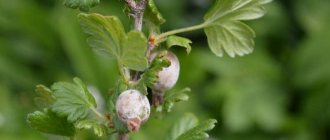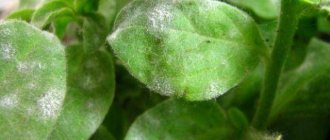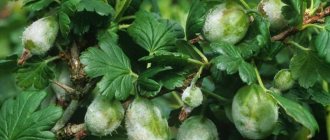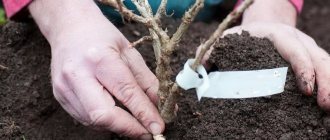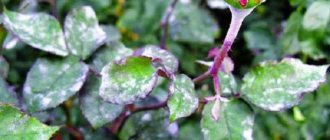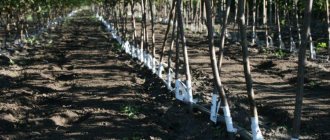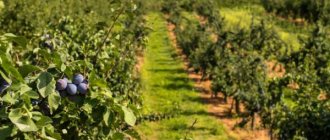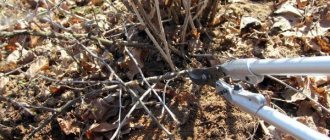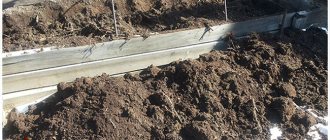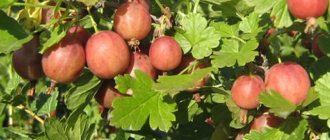Gooseberries, grown in almost every garden, are distinguished by not only tasty, but also healthy berries. The fruit contains various vitamins, mineral salts, and organic acids. Compotes are prepared from the berries, jams are made and other sweet preparations are made. However, a good harvest can only be obtained if fruit bushes are properly cared for in spring, summer and autumn. Often, after harvesting, gardeners forget about garden plants, which is fundamentally wrong. Like any other shrubs, proper care of gooseberries in the fall and their preparation for winter are very important. Read below what procedures should be carried out with bushes at this time of year.
Pruning gooseberry bushes in autumn in detail with video
In order to have a lot of harvest, autumn pruning of bushes is mandatory. Before you begin the procedure, you need to learn some pruning rules:
- the cut is made at an angle of 45 degrees;
- branches are cut at a height of 5 mm from the fruit bud, which cannot be damaged;
- To avoid thickening, the shoots are cut above the bud, which is located outside the branch.
In the fall, sanitary pruning is carried out, during which dry and diseased shoots, branches lying on the ground and excess shoots that interfere with the lighting of the crown and its ventilation are removed. Less light always penetrates into the middle of the bush, so pruning there is carried out more carefully.
As a result, developed shoots should remain. If any of them are too long, shorten them by a third.
Attention! Some bushes may have too many dry and diseased branches. It is not recommended to cut out more than 1/3 of the shoots in one season.
WATCH THE VIDEO HOW TO PRUNCE GOOSEBERRY CORRECTLY IN AUTUMN
You may be interested to know: When to open grapes in the spring after wintering
How to care for gooseberries in autumn
A well-developed shrub, which has been carefully looked after, will give the gardener more than 10 kg of tasty and large berries . With improper agricultural practices, the crop grows quickly, which reduces fruiting.
What to do in the fall:
- remove weeds and debris from the root zone;
- dig up the soil under the bushes;
- water the soil abundantly;
- feed the plants;
- trim bushes and thin out old branches;
- protect the crop from freezing in winter.
What to feed
After the leaves fall, the soil around the bushes is cleared of dry leaves and weeds. In autumn, the ground can be treated with special preparations that destroy the roots of weeds. After this, you can apply autumn fertilizing suitable for gooseberries.
Fertilizers in the form of granules or solutions are applied to the cleaned soil around the bushes. To prepare gooseberries for winter, you should feed each bush:
- 100 g ash;
- 20 g potassium sulfate;
- 30 g superphosphate.
Caring for gooseberries in autumn
In order for the plant to overwinter normally, it is necessary to care for the bushes in the fall. Several events are held.
- The root zone is treated - cleared of leaves, debris, rotten, crushed berries. Remove weeds and wheatgrass. Then they burn it.
- They carry out prevention against diseases and pests - after harvesting, the plants and soil are sprayed with Bordeaux mixture and copper sulfate. They also use Topaz and Fundazol. If a plant is affected by a disease, it is destroyed or all damaged parts are removed.
- Pruning is done from mid-October until frost. Use a sharp, disinfected pruner. Underdeveloped, broken, non-fruit-bearing branches located too close to the ground are cut out. Long ones are shortened by 1/3. Then the bushes are thinned out and the cutting areas are sealed with garden varnish. If the bush is mature, more than five years old, cut out the old stems. They leave strong shoots, up to 6 pieces, evenly spaced throughout the crown.
- Feed - for autumn feeding you need: phosphate and potash fertilizers.
- Water in dry and warm weather from late September to mid-October. The ditch dug around is filled with water. After absorption, cover with soil.
Treatment of gooseberries in the fall from pests and diseases
Gooseberry bushes are treated against pests and diseases not only in spring, but also in autumn. At this time of year they no longer bear fruit, so insecticides and fungicides can be used:
- For pests, gooseberries are treated with a solution of Karbofos (10 g of the drug per 5 liters of water) or another insecticide.
- For fungal diseases, you can use 3% Bordeaux mixture, copper oxychloride (25 g per 5 liters of water) or a solution of any suitable fungicide.
- After removing leaves and weeds, the soil around the bushes is sprayed with Chistoflor or Forecast.
All drugs are used according to the instructions supplied with them.
Briefly about targeted prevention measures
Targeted measures are used if there are risk factors for any disease.
Scab
To prevent this disease, you need to:
- Remove fallen leaves in a timely manner.
- Inspect the bushes for signs of infection.
- Remove diseased fruits and branches.
- Treat with urea solution.
Powdery mildew
To prevent the occurrence of this disease, you should:
- Spray the bushes with Bordeaux mixture or copper sulfate.
- Treat the plant twice a year.
- Use less nitrogen fertilizer.
Lichen
One way to avoid overgrowing gooseberries with lichen is to trim off excess branches every year after harvesting.
Aphid
This pest will not appear on the plant if:
- Weed the root circle of the crop in a timely manner.
- Remove leaves.
- Use special means.
Gall aphid
Removing weeds and treating leaves with Nitrafen allows you to forget about these insects for many years.
Shoot aphid
It is important to promptly detect aphid larvae and treat them with a soap solution.
Currant bud mite
As a preventive measure, the plant should be sprayed with preparations containing sulfur in spring and autumn.
Shields
This insect lives in the cracks of bushes. To avoid their appearance, all wounds must be covered with copper sulfate or garden pitch.
Fires
To combat caterpillars, it is best to use chemicals, the list of which is provided above.
Mulching the soil
At the last stage of preparing gooseberry bushes for winter, the soil around them is insulated. To do this, use mulch, which is scattered around the tree trunk. The mulch layer should be about 10 cm. You can use humus or peat, which will not only protect the roots of the shrubs from frost, but will also provide additional feeding. Snow is also a good protection against too low temperatures. Therefore, when the snow falls, do not be lazy and throw it under the bushes.
You will be interested to know: When, how and what to feed young and old apple trees in the spring so that they bear fruit
Gooseberries are unpretentious fruit shrubs that tolerate winter cold well. However, if severe frosts are expected in winter, it is better to play it safe and cover the bushes with non-woven material.
Diseases and pests dangerous to gooseberries
Gooseberries are susceptible to the following diseases:
- American powdery mildew;
- scab;
- gooseberry anthracnose;
- white spot or septoria;
- glass rust;
- gray rot;
- verticillium wilt;
- gooseberry mosaic;
- lichen.
Spraying gooseberries
Insects that harm gooseberries:
- sawfly (sawyer);
- gooseberry moth;
- scale insect;
- shoot aphid;
- gooseberry moth;
- spider mite;
- currant bud mite;
- currant glass;
- currant gall midge.
Processing times
Experienced summer residents recommend processing in several stages:
- The first treatment should be carried out at the beginning of currant flowering - in early spring.
- The second is during the appearance of the kidneys.
- The third - in the fall, after picking berries.
Important!
It is in the fall that currants need special treatment. After picking the berries, it requires proper fertilizing and care. Thus, the plant tolerates cold winter well and produces a bountiful harvest of berries next year.
Currant processing begins after harvesting the fruits, following important rules:
- In addition to cutting off thin and old shoots, branches affected by glassworm should be pruned. Often these branches are limp and dry and have a black core. It is also worth paying attention to whether there is powdery mildew or bud mites. In this case, the shoots are completely removed by cutting them off from the base.
- Old currants should be rejuvenated a little. When pruning such plants, it is important to stick to the golden mean - not to cut off too many branches. If you plan to remove a large number of unnecessary branches, it is recommended to do this not immediately, but in stages.
- This pruning should be done within 3-4 years. A third of the branches are cut off every year. Sections of thickened organs must be treated with garden varnish, and the branches must be burned.
Folk remedies
Treatment of gooseberries against powdery mildew, which is non-toxic to humans, is carried out using folk remedies according to the following recipes:
- 1 ml of iodine per 1 liter of water;
- 1 tbsp. l. soda ash per 10 liters of soapy water;
- 1 liter jar of ash per 10 liters of soapy water;
- infusion of rotted manure - 1 part manure, 3 parts water.
Folk remedies for insect pests:
- garlic infusion: leave 200-300 g of finely chopped garlic (or garlic arrows) in 10 liters of water for several hours, strain;
- onion infusion: 200 g of onion peel, 10 liters of water, leave for five days;
- infusion of tomato or potato tops: 1.5 kg of tops, 10 liters of water, leave for 3-4 hours.
The currant bud mite is fought mechanically: large affected buds are removed from the bush at the beginning of the growing season.
Fertilizing and tillage
By following all the rules for growing currants and providing proper care, you can make the plant more resistant to many pathogens and parasitic insects. The maximum effect can be achieved by choosing the right fertilizers for feeding in the fall, determining their correct amount.
Mineral fertilizers
If after planting the plant the soil is well fertilized, the currants will not require fertilizing for at least 2 years. After this time, it is worth returning to fertilizing. After the fruits are collected, it is important to fertilize the currants with phosphorus and potassium. 1 tbsp. a spoonful of chlorine-free potassium and superphosphate. After applying such fertilizing, the currants are watered with 10 liters of water.
If currant processing in the fall is carried out in the rain, there is no need to water it. It is enough to sprinkle granules around and loosen the soil a little. The rest of the autumn fertilizing can be done with the addition of manure and potassium, superphosphate.
Organic fertilizers
You can feed the soil and plant with organic matter. Black currants are processed throughout the fall. For fertilizing to take effect, a long time must pass. Organic matter (chicken droppings and manure) takes at least 6 months to decompose.
The effect of such fertilizers often begins closer to March and April. After 2-3 months, the bush begins to branch well, giving new shoots. These activities should be carried out throughout the entire summer season. Thus, the plant will receive the maximum amount of nutrients.
Subtleties of autumn processing
When preparing the garden for winter, treat the bushes and soil with an aqueous solution of copper sulfate. This should be done in the fall after the end of the growing season. In this case, you should remove fallen leaves and loosen the soil in the near-trunk part.
Autumn treatment of bushes against pests with drugs involves the use of Bordeaux mixture, an aqueous solution of soot. These drugs eliminate pests. Serve as fertilizer for bushes. When choosing a product, take into account the method of action on insects and the plant.
The timing of the work depends on the climatic conditions of the region. Vegetable debris and weeds are removed from the area where shrubs are planted. During this period, attention is paid to formative pruning and damaged shoots are removed. Mineral and organic fertilizers are applied to each bush. To protect against frost, use pine needles, peat, and foliage.
Treatment of currants against diseases
- In the spring, after the usual prevention, it is necessary to spray the currant bushes and the soil under them with a solution of karbofos or nitrophen, both solutions should be 2 percent. This procedure protects the plant from almost all diseases.
- After 10 days, treatment with Bordeaux mixture is carried out.
- And when buds appear, prevention is carried out by spraying the bushes with fundozol.
Treatment of currants in the fall against parasites and diseases also involves spraying the currants. When processing, the following rules should be observed:
- Spraying is carried out strictly in dry weather , and preferably in the morning or evening.
- When spraying, a respirator or any analogue means of protection is required.
- Chemical processing preparations and various infusions are carried out up to 5 times per season, but before harvesting the berries, 2 decades or 3 weeks must pass from the moment of treatment.
There are different medicines for different diseases:
- Powdery mildew is treated with Topaz or Vectr , it is possible to use Fitosporin.
- All types of rust can be easily removed with Bordeaux mixture , as in principle with almost all other diseases.
- Mosaic and terry disease are very difficult to treat, and the only 100% way is to cut down and burn the bush, but at the initial stage the affected areas are removed and treated with Karbofos.
How to prepare currants for winter
Currants, both black and red and white, are a fairly winter-hardy crop. Plants easily tolerate frosts down to –30°C and do not freeze. This means that there is no need to cover currant bushes in the fall. But there are other works that will contribute to an easy winter, high-quality bud formation and powerful fruiting in the next season.
Pruning currants in autumn
You can form a currant bush both in spring and autumn. But few people have time to do this at the beginning of the season, because the buds on the berry fields wake up very early, and spring pruning can injure the currants and delay the onset of fruiting.
If you are not sure how to properly prune currants in the fall, then use our tips:
- First, remove all dried and rotten branches (they can be distinguished by their gray or gray-black color, loose bark, lack of leaves and brittleness).
- Remove thin shoots at the root (without stumps).
- Trim branches lying on the ground or intertwining with each other - they only spoil the crown.
- Without pity, burn all removed branches, fallen leaves from the bush and old currant mulch, under no circumstances putting them in compost.
An adult currant bush should have 12-15 shoots of different ages. A smaller quantity means that you are not receiving enough harvest, a larger quantity means that the bush is thickened and cannot feed everyone.
After establishing negative temperatures, the currant branches need to be tied with twine in a spiral, compacting the bush. This will allow it to withstand winter winds and not break under the load of wet snow.
Processing currants in autumn
Preparing currants for winter is not only about removing excess branches. It also includes important pest and disease control. You need to start getting rid of diseases in early autumn by treating the bush with copper oxychloride (40 g per bucket of water) or 1% Bordeaux mixture.
At the end of September, move on to the next stage and begin preparing the soil for the cold weather. It is in it, at a depth of up to 20 cm, that a large number of harmful insects overwinter, which in the spring with excellent appetite attack tender buds and leaves. Therefore, the ground under the currant bushes needs to be weeded and then carefully loosened, trying not to damage the thin currant roots. On the eve of digging, spray the bushes themselves with a solution of urea (a matchbox of granules in a bucket of water). During loosening, you need to incorporate phosphorus-potassium fertilizer (Autumn or AVA) into the soil at a dose of 30-40 g per 1 sq.m.
It is recommended to cover the treated soil with a new layer of mulch about 10 cm thick, which can be used as hay, sawdust, etc. or cardboard (3-4 layers). As soon as the snow falls, spread it under the bushes and trample it down, and if the height of the snow cover allows, cover the bushes completely - this will allow the currants to overwinter without problems.
Caring for black currants in the fall is no different from caring for red or white currants.
